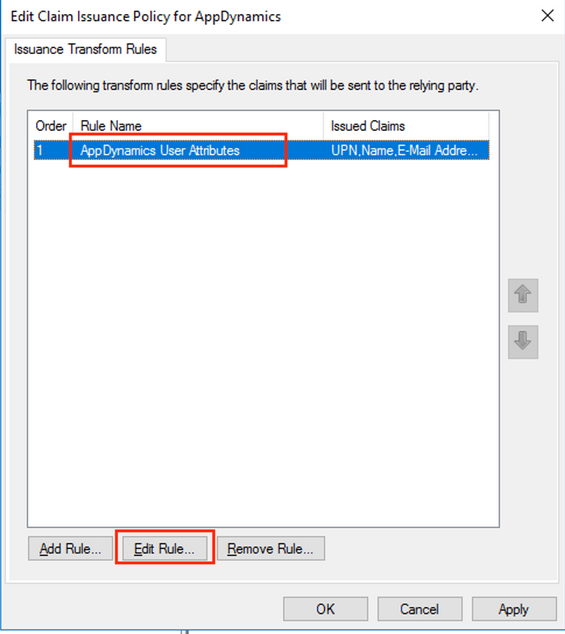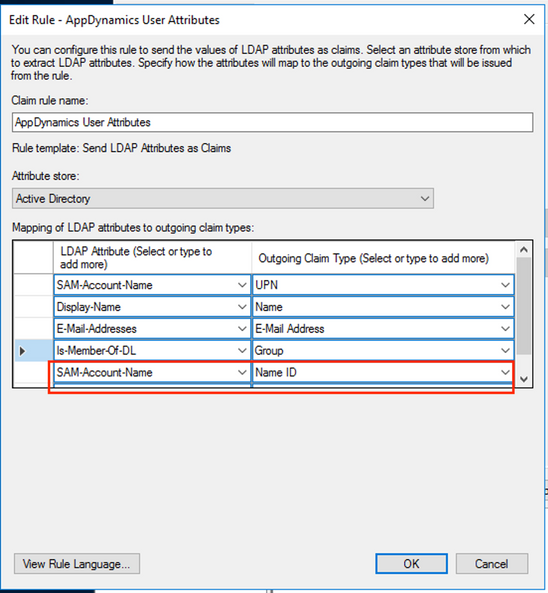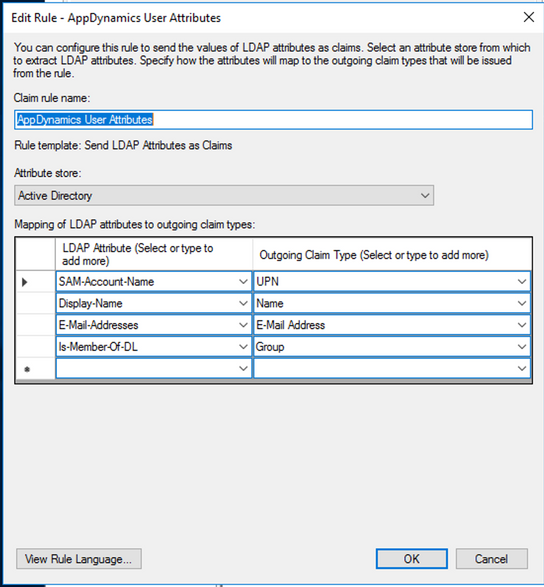- Community Hub
- Forum Q&A
- Business iQ (Analytics)
- Controller (SaaS, On Premise)
- Dashboards
- Dynamic Languages (Node.JS, Python, PHP, C/C++, Webserver Agent)
- End User Monitoring (EUM)
- Infrastructure (Server, Network, Database)
- Java (Java Agent, Installation, JVM, and Controller Installation)
- Licensing (including Trial)
- .NET (Agent, Installation)
- Smart Agent
- General Discussions
- Resources
- Groups
- Idea Exchange
Not a customer? Click the 'Start a free trial' link to begin a 30-day SaaS trial of our product and to join our community.
Existing Cisco AppDynamics customers should click the 'Sign In' button to authenticate to access the community
- Cisco AppDynamics Community
- Resources
- Knowledge Base
- How do I troubleshoot Active Directory Federation ...
- Subscribe to RSS Feed
- Mark as New
- Mark as Read
- Bookmark
- Subscribe
- Printer Friendly Page
- Report Inappropriate Content
At 6pm PST, the AppDynamics Community will go into read-only mode and after migration is complete, you will be redirected to community.splunk.com.
Read more here
- Article History
- Subscribe to RSS Feed
- Mark as New
- Mark as Read
- Bookmark
- Subscribe
- Printer Friendly Page
- Report Inappropriate Content
on
02-08-2019
04:45 PM
- edited on
07-13-2022
04:24 PM
by
Claudia.Landiva
How do I resolve problems signing in to my v4.5x Controller via SAML?
After upgrading the Controller to v4.5.x, you may encounter an issue where the SAML authentication request fails for accounts that use Active Directory Federation Services (ADFS) SAML. As a result, you may experience problems logging in via SAML to your Controller.
HAVEN'T UPGRADED YET? The Solution section below can help ensure that your users avoid this problem after upgrading.
In this article...
Symptoms
If you recently upgraded a SaaS Controller and use ADFS SAML, you will see a generic 400 error in your Controller UI when trying to log in.
If you have an on-prem Controller, you will see the following error in the Controller server.log:
[#|2018-11-29T15:42:57.360-0800|SEVERE|glassfish 4.1|com.singularity.ee.controller.servlet.SAM
LAuthenticationServlet|_ThreadID=75;_ThreadName=http-listener-1(13);_TimeMillis=1543534977360;
_LevelValue=1000;|Error while processing SAML Authentication Response
com.onelogin.saml2.exception.ValidationError: No name id found in Document.
at com.onelogin.saml2.authn.SamlResponse.getNameIdData(SamlResponse.java:466)
at com.onelogin.saml2.authn.SamlResponse.getNameId(SamlResponse.java:480)
at com.onelogin.saml2.Auth.processResponse(Auth.java:527)
at com.onelogin.saml2.Auth.processResponse(Auth.java:557)
at com.appdynamics.platform.services.auth.impl.resource.SamlAuthenticationResourceImpl.consumeSAMLAuthenticationResponseInternal(SamlAuthenticationResourceImpl.java:206)
at com.appdynamics.platform.services.auth.impl.resource.SamlAuthenticationResourceImpl.consumeSAMLAuthenticationResponse(SamlAuthenticationResourceImpl.java:162)
at com.appdynamics.controller.mds.auth.MdsSamlAuthResourceImpl.consumeSAMLAuthenticationResponse(MdsSamlAuthResourceImpl.java:59)
at com.singularity.ee.controller.servlet.SAMLAuthenticationServlet.doPost(SAMLAuthenticationServlet.java:262)
at javax.servlet.http.HttpServlet.service(HttpServlet.java:707)
at javax.servlet.http.HttpServlet.service(HttpServlet.java:790)
at org.apache.catalina.core.StandardWrapper.service(StandardWrapper.java:1682)
at org.apache.catalina.core.ApplicationFilterChain.internalDoFilter(ApplicationFilterChain.java:344)
at org.apache.catalina.core.ApplicationFilterChain.doFilter(ApplicationFilterChain.java:214)
at com.singularity.ee.controller.servlet.RequestOriginMarkingFilter.lambda$doFilter$0(RequestOriginMarkingFilter.java:37)
at com.appdynamics.platform.RequestOrigin.runAs(RequestOrigin.java:65)
Reason
As part of our improvements around SAML 2.0 authentication in the v4.5 release, our SAML implementation now requires a NameID assertion for Microsoft ADFS. If your configuration has not been updated to include this prior to upgrading to v4.5, you may encounter the error above.
Solution
To resolve this, add the NameID as the Outgoing Claim Type in your claim rule. You can map NameID with any unique ID (SAM-Account-Name, email, or UPN etc.). Follow the steps below prior to upgrading your Controller.
1. From your ADFS Console, select the “Relying Party Trusts” folder.
2. Select your trust for AppDynamics and right-click on it.

3. Choose “Edit Claim Issuance Policy…”
4. On the Issuance Transform Rules screen, select your AppDynamics rule and click the “Edit Rule…” button.
5. In the Edit Rule dialog, either add a new unique identifier (e.g., SAM-Account-Name) or edit the existing unique identifier (e.g., SAM-Account-Name) and map it to the Outgoing Claim Type “Name ID.”
- Add a new unique attribute
- Edit an existing attribute
6. Save your work.
7. Test to ensure that the authentication succeeds.
Instructions last updated: 2/27/19
Join us on Feb 26 to explore Splunk AppDynamics deployment strategies, SaaS models, agent rollout plans, and expert best practices.
Register Now
Dive into our Community Blog for the Latest Insights and Updates!
Read the blog here

Thank you! Your submission has been received!
Thank you! Your submission has been received!
Oops! Something went wrong while submitting the form




